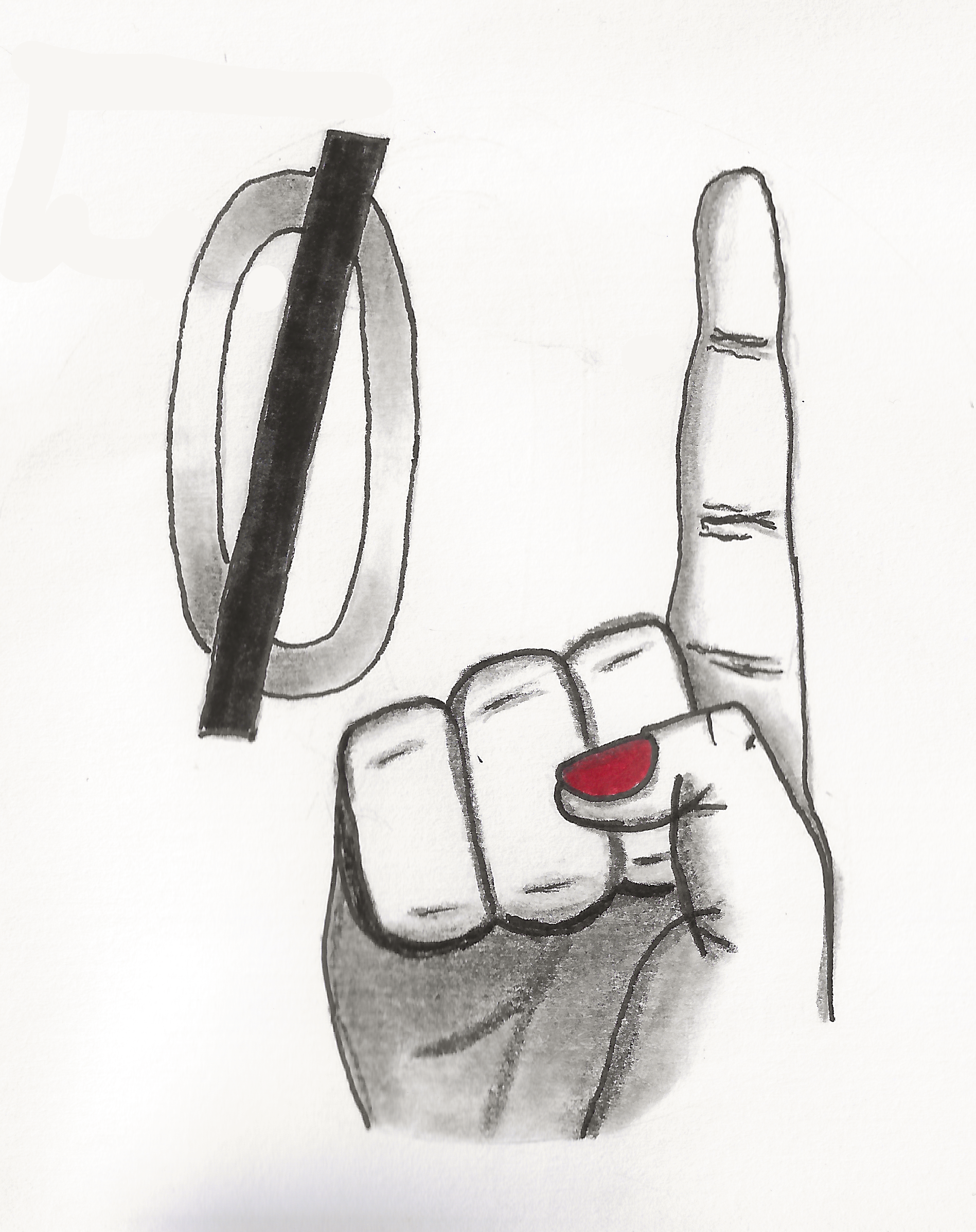- 33 Posts
- 53 Comments

 1·22 days ago
1·22 days agoWhat I found most astonishing is that a scanner picked up the tiny yellow dots. They mention the model of printer (Xerox Docucolor) but not the scanner. The NSA logo looks like a low-res scan yet it must have been a quite high-res scan to get the tracker dots, I would think.

 1·23 days ago
1·23 days agoI would of course frame some poor sucker by using their color Canon printer. I think all the Canons have the yellow tracker dots.
Otherwise a black Samsung or Oki would perhaps be safest.
BTW, why do you mention laser printers specifically? AFAIK the trackers are generally with yellow pigment, and most laser printers are not color.

 2·2 months ago
2·2 months agoThanks. I’ll have a look at some of those approaches.
(edit) I used a feature in the KOMAscript pkg to produce circles that reach the edge of the paper. I also used one of the approaches in your link to create a frame at the point where the /expected/ boundary is, so that if the frame has any missing lines it would indicate where the specs may be wrong. But I must say I don’t trust LaTeX to produce an accurate frame because some lines are closer to the edge than others even though I asked for 4.2mm on all sides.

 2·2 months ago
2·2 months agoThe staff at the shop I use the most did not know. But the self-service printers are different than the printers used by the staff. They might know for the printers they use, which is naturally more costly.
Creating something with symbols going all the way to edge seems like a good idea. I would not want any spacing between the symbols though, so I guess it would be non-trivial code.

 1·2 months ago
1·2 months agoI could flood the page with color, then place a white box on top of that that covers all but 20mm around the border knowing that the unprintable region would not be bigger than that.
What I had in mind was many lines terminating at many positions around the border, each line marked with how much gap it leaves. Then the first line to not go as far as the others would be the penultimate one. Your idea sounds a lot easier. But ideally the ideas could be combined if the doc were to be published for many to use for that purpose.

 21·4 months ago
21·4 months agoOh, right! Indeed, I forgot there was a language specifier for the post itself. That fixed it. Thanks!
What a piece of shit software.

 1·4 months ago
1·4 months agothanks for the tip, but it seems to make no difference. I changed it from browser default to english. Is that the right setting? The screenshot does not render for me.
I simply tried to add the word “needed” to the end of the title, and it said “language not allowed”.

 1·4 months ago
1·4 months agoIndeed minipage would be a decent workaround in this scenario. It’s effectively very similar to what I settled on (
paracol). I just updated the OP to reflect this.With both the minipage approach and the paracol approach, we give up the ability to have text flow from one column to the other. But for the doc I am working on at the moment, it’s perhaps best to control the flow anyway.

 2·4 months ago
2·4 months agoThat would work if dates are not reused. But if you have a block of
\DTMsavedatevariables in the preamble and then refer to those dates throughout the doc by the variable name you assign, the spreadsheet would be more trouble than it’s worth because you would have to copy-paste all the dates into the spreadsheet, choose the new format, copy them back, and risk the update anomaly in the event that you revise a date in the preamble. Could be useful for some situations though. But I guess I would still rather replicate\DTMsetdatestyle{default}\DTMsetup{datesep=/}in every cell that needs it.

 1·4 months ago
1·4 months agoLiterally just print as PDF on Windows, you can pick if you want greyscale or coloured…
That’s a non-starter for the same reason I mention: color backgrounds are dithered and colored text becomes various shades of gray, not black. There are lots of dithering techniques to experiment with and some might yield black text, but if I am producing a PDF I would not want to impose that kind of expertise and experimentation on the end user.
I am asking how to produce a PDF that has a mono mode and a color mode – and whether that technology even exists. If the PDF is rendered on the screen, it might have color backgrounds. But when printed to a mono device, the color backgrounds should be stripped out (or not, depending on my specification).
If you want to produce a nice PDF from a markdown document, I recommend the knitr package in RStudio with R, and writing an .Rmd file such that you can just place all your graphs/code/text in it as you write, including LaTeX stuff.
I am not starting from a markdown doc, but I would if that made a difference. I’ve never used RStudio. Does that produce a PDF that has two representations, mono and color?

 1·5 months ago
1·5 months agoPerhaps.
One thing I find irritating with git is how it handles blobs. The doc has lot of small graphical images which do not need version control, but they need to exist along side the controlled objects. I will have to put them under version control just to get them in the same area.
I might still try latex2rtf, if the collaborator terns out to be quite low tech. But I guess I should have low expectations of a 2 column doc coming out well.

 1·5 months ago
1·5 months agoThere are different narratives. What I believe I heard on BBC radio was that the sender intended to just send a few records to the recipient but accidentally sent the full dataset of 18,000 (or 19,000) records.
Other sources, like the one I linked, say the error was that the wrong recipient was emailed.
It’s surprising that as big as the story is, reporting of the tech details is lousy. A couple sources say the data was a spreadsheet, which seems to support what the Guardian says.

 1·6 months ago
1·6 months agoDoes the “Buy European” community disregard software?
Nokia briefly had a couple devices with an apparently FOSS platform: Maemo, IIRC. Then they ditched that to align with Microsoft. And their recent smartphones are apparently based on Google’s Android. That’s not European.
If you must have an Android for some strange reason, then I suppose Nokia or Wiko would be as close as you can get to European. But fuck Android. It’s proprietary and designed for obsolescence.
I would not even announce centralized instances like piefed.ca. It’s part of the Cloudflare giant.

 1·7 months ago
1·7 months agoI have not tried much of anything yet. I just got a cheap laptop with a BD which came with Windows and VLC. I popped in a blu-ray disc from the library and it could not handle it… something about not having a aacs decoder or something like that. I didn’t spend any time on it yet but ultimately in principle I would install debian and try to liberate the drive to read BDs.

 1·7 months ago
1·7 months agothanks!
Though I should mention my original motivation with makemkv was to rip blu-ray discs, which has complications that go beyond DVD. But the DVD guide will still be quite useful.

 1·7 months ago
1·7 months agoI’m so tired of overly busy qr codes.
I’m tired of having to search through text to get enough of an idea of what a QR code is before I go to the trouble of pulling out a scanner. Is it an URL? Wi-Fi creds? It’s not about being cute. It’s about being informative in as little space as possible. Do you scan a naked QR code without cause? Street wise users want an indication of what they are scanning in the very least.
It should also be noted that the QR code pixels will get smaller and smaller the more data you’re encoding.
You have control over that. If you want to hold the pixel size constant, the qr code’s geometry gets bigger. The qrcode LaTeX pkg includes a size parameter. Either way, up to 30% of the space could be wasted, depending on the use case.
QR codes have countless applications. Not all QR codes need to be scanned from the other side of a room. When a QR code appears on a document that someone is holding, as opposed to a sign, it only needs to function within 10cm. I’m working on 2-column bilingal legal documents citing laws from different countries. There is insufficient space for country indicators and 30% of the QR code is just wasted space in this context, which really adds up of you have many QR codes. In a corner case, flaws from multiple generations of photocopies could manifest but 30% redundancy is overkill. So putting the country indicator for the law being referenced inside the QR code makes the most efficient use of page real estate without resorting to poor aesthetics.
Also, QR codes are ugly. I’m happy to see creative people dress them up. Of course there is only room for clever artists in this space and easy for kids making qr codes to get carried away.

 1·7 months ago
1·7 months agoFun suggestion… could be useful to have as a side hack if congestion becomes an issue but I doubt it would come to that. They have what seems to be a high-end switch with 20 or so ports and internal fans.

 1·7 months ago
1·7 months agoThe event is ~2—3 hours or so. If someone needs the full Debian (80 gb!), I think over USB 2 it would not transfer in that timeframe. USB 2 sticks may be rare but at this event there are some ppl with old laptops that have no USB 3 sockets. A lot of people plug into ethernet. And the switch looks somewhat more serious than a 4-port SOHO… it has like 20+ ports with fans, so I don’t get the impression ethernet congestion would be an issue.






I’m not sure why you would regard black dots as invisible.
The EFF warned that no printers are safe (or something to that effect), as they gave up on the project to document the models with tracker dots. I suppose the question is: have any black laser printers been concretely identified as having tracker dots?
In any case, I think mono printers are safer simply because there is no legit cover story for that surveillance. So if someone gets caught doing something naughty, there would be a more reluctance to use the evidence if it reveals mono printers are compromised. A mono printer maker would have no defense for their anti-consumer design.